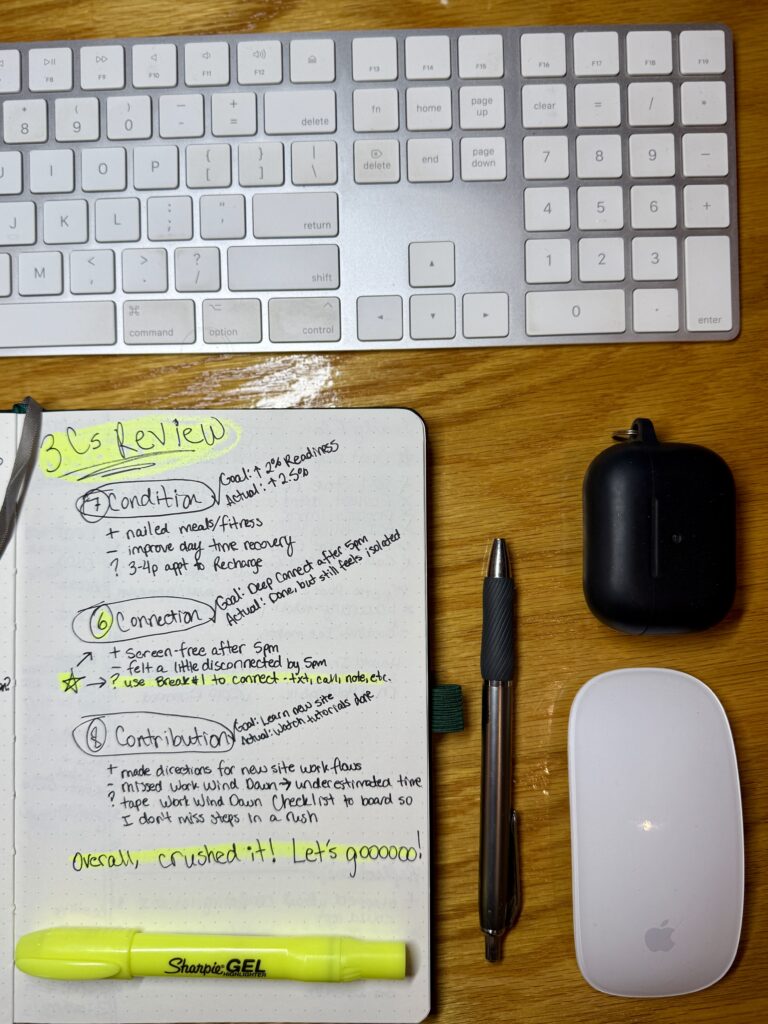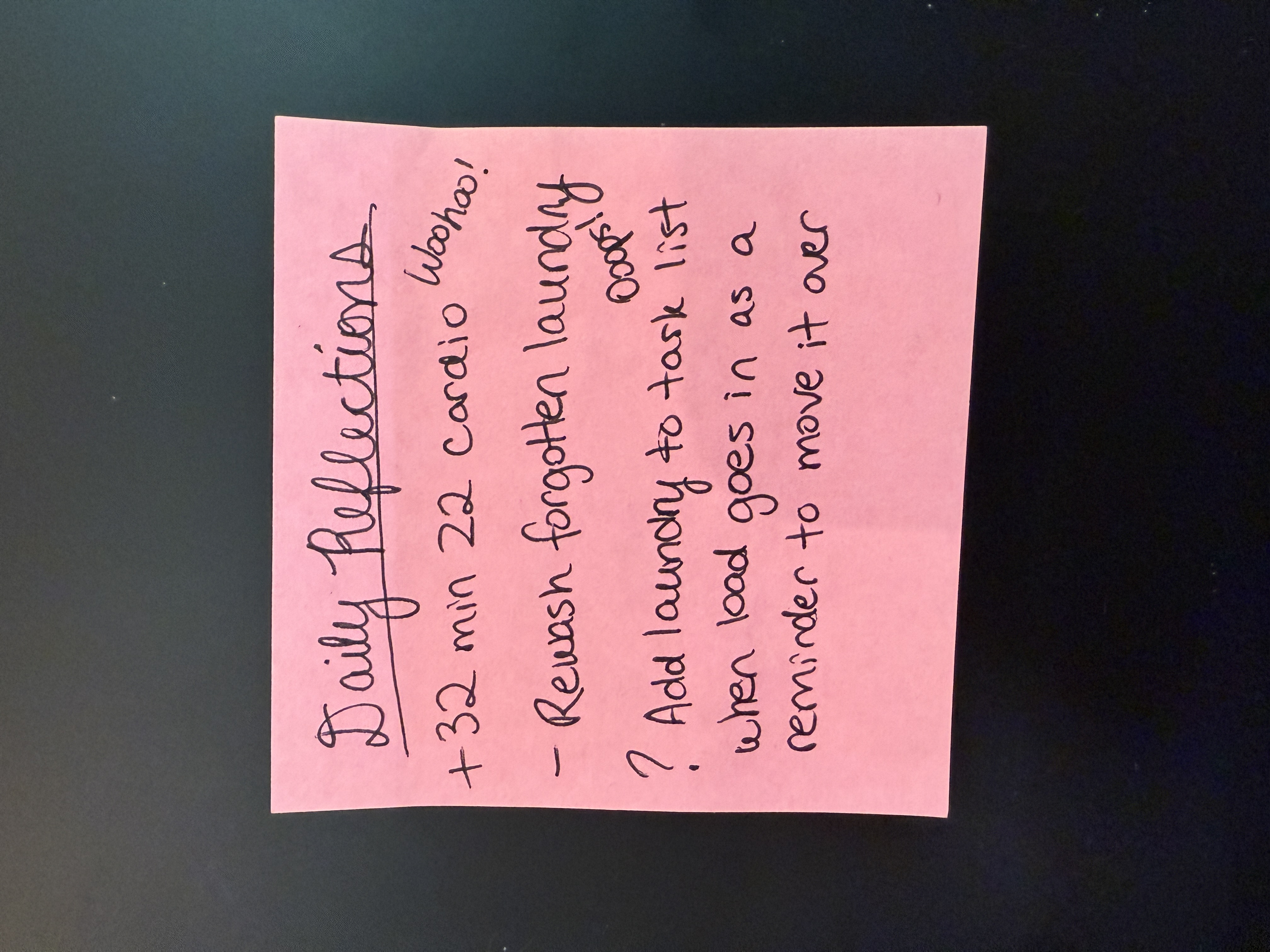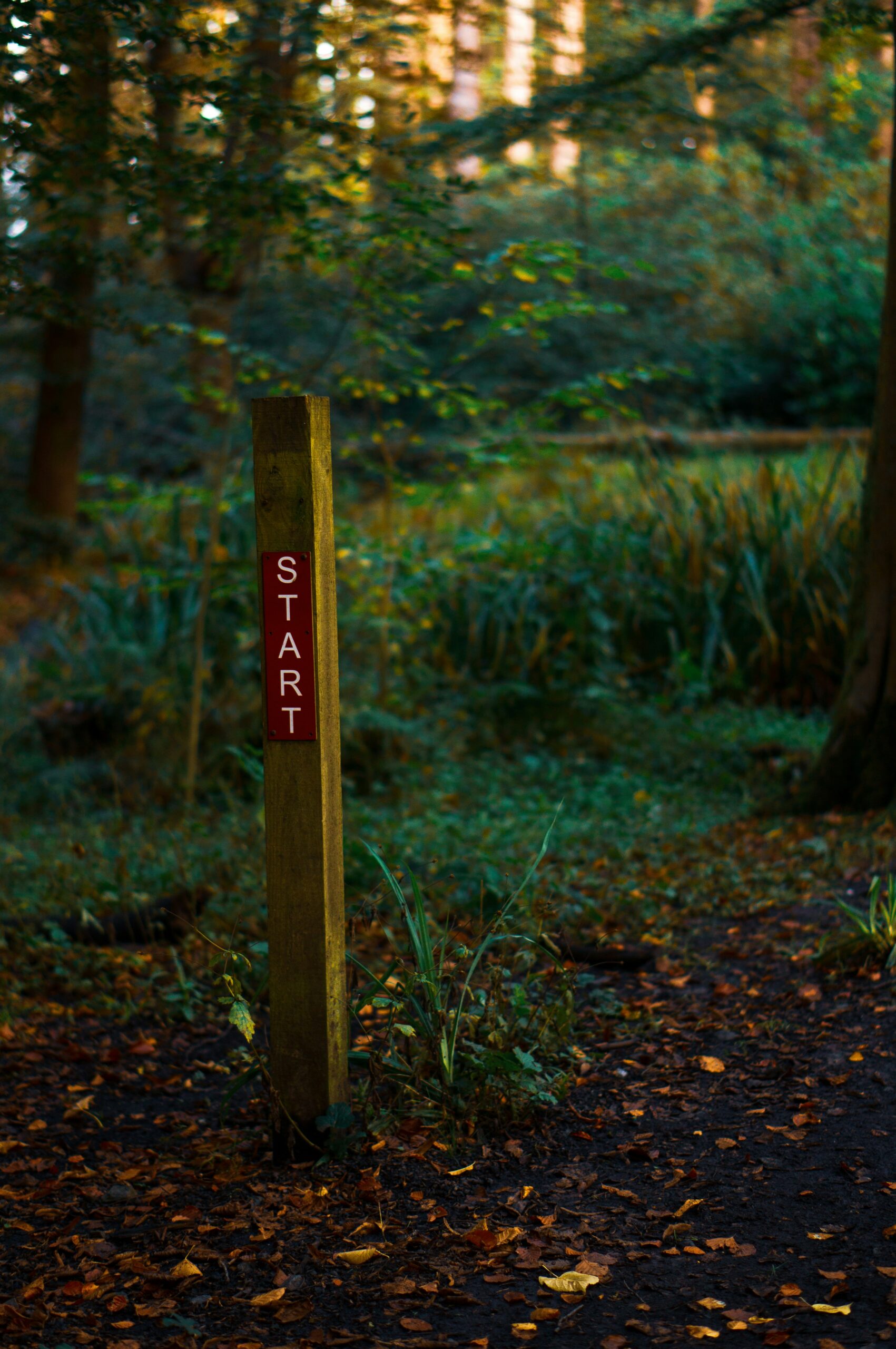Have you ever used Mapquest? The printable, step-by-step directions were a nice transition from the bulky Atlas books. The trouble with Mapquest directions was that if you missed a turn, the remaining directions would be useless until you backtracked to the last correct turn. Today’s GPS is so convenient and effective. The principles that help get us from geographical point A to B can also help us navigate to our vision. Just as with any navigational system, we need a destination (visionary horizon), a starting point (current reality), and alternate routes (perseverance pathways). We discussed clarifying our vision in previous blogs, but this piece is focused on assessing our current starting point.
Cultivating a Curious Mindset
We must assess our current reality with a curious (not critical) mindset knowing we will likely discover some thoughts, behaviors, and habits that are not serving us well. It’s natural, but not always helpful, to get emotionally charged when we know what to do and fail to execute. Emotions like frustration can be the catalyst to meaningful change, but they can also negatively impact our morale, energy, and confidence. Negative emotions burn hot, but they burn out quickly. Taking an honest inventory of ourselves is much more likely to happen if we make it more enjoyable by removing critical, demeaning judgment.
Productive Feedback
A good litmus test for productive feedback is determining if you would share it with a loved one. If the motivation for the feedback isn’t to spark a solution, then it’s probably not helpful. Using the THINK before you speak acronym can help break this cycle. When I worked in an office with others, I kept a sticky note on my desk to make sure my words were True, Helpful, Inspiring, Necessary, and Kind. This habit was something I transferred to my inner dialogue as well. How we speak to ourselves matters. Here’s how we can make negative feedback productive and solution-oriented:
- Destructive Feedback: “I can’t believe I was late to another meeting. Everyone probably thinks I’m a self-absorbed jerk who can never be on time for anything.”
- Productive Feedback: “I’m disappointed I was late for our team meeting because my engagement and ideas matter to the team. I will change my five-minute calendar reminder to fifteen minutes to give myself enough time to wrap up my work, do a quick reset, and be fully present before the meeting starts.”

Prioritizing Self-Reflection
Failing to engage in meaningful self-reflection altogether will stunt our progress. If we rarely practice self-reflection is it because we are concerned we’ll be disappointed with the results, or do we lack a simple system that makes it easy? It requires dedicated time/energy, how-to knowledge, and a simple system. Are the following statements true? If not, that may be the piece that needs work.
- I believe self-reflection is important to my progress and growth.
- I have a recurring appointment on my calendar for self-reflection.
- I know what’s important to me, who I want to become, and what I need to do.
- I use a simple tool (like the Three Checkpoints outlined below) to capture data/feedback, develop solutions, and track progress.
Appreciating the “Bad Data”
Treating all data, the good and the bad, as interesting information by setting aside negative emotions will help us convert shortcomings into success strategies and successes into repeatable systems. If we have trouble approaching “needs improvement” feedback with stoicism, we may find it easier to get passionately excited than to feel calm detachment. I am quite zesty and have not yet mastered the stoic approach, so I speak from experience. What if we challenge ourselves to get excited when we see “bad data,” because we are confident in our ability to use it for growth? The good data from a successful venture is nice, but it doesn’t provide the same springboard for growth as “bad data” used correctly. It’s all usable, but we may need to reframe how we see “needs improvement” feedback. With a curious mindset, we can courageously assess the good and bad of our reality with grace and honesty as we confidently and consistently move from our starting point to our visionary horizon.
Evaluating the Key Areas
Self-reflection can feel overwhelming if we don’t know where to start. A quick online search reveals many resources and tools, but too many leave us overwhelmed from splintering our focus in too many directions or discouraged from failing to prompt solutions for identified shortcomings. A good system should help us evaluate the essentials and help us determine how to improve them. I regularly evaluate these three main categories in my life.
- Condition: overall well-being of our spirit, mind, and body; health
- Connection: depth and quality of our relationships; relationships
- Contributions: meaningful ways we give back to the world; work
The Three Checkpoints: Condition, Connection, Contribution
The three checkpoints (3Cs) are broad enough to encompass everything that matters and specific enough to help us isolate our most pressing next step. Alliteration helps me remember them, but feel free to get creative and rename them something that resonates deeply with you. Toward the end of each month, I’ll compare what I intended to accomplish with the actual outcomes, then I’ll rate my 3Cs on a scale of one to ten. I’ll pick one area, typically the lowest score, and determine an idea, tool, or practice that will help me improve this score. This simple system with a performance review, self-evaluation, and improvement plan takes me less than five minutes to complete. Simple systems are the ones that get the most use, so don’t overcomplicate it. My system looks something like this.

Performance Review:
- Condition: I intended to improve my average Oura Ring readiness scores by 2%. I hit a 2.5% increase. Crushed it!
- Connection: I intended to carve out more deep connection time. The evenings were great, but something was still missing. How do I create more meaningful connection moments throughout the day?…
- Contribution: I intended to engage in blocks of intentional learning to reduce time spent bumbling around trying to figure out the new program. I used Youtube to learn the ins and outs of the new software…but it was at the end of the day so my work wind down was often rushed or skipped which slowed down my next morning’s progress.
Self-Evaluation:
- Condition → 7 → nailed meal plan & fitness routine, need more daytime recovery
- Connection → 6 → excellent screen-free presence in evenings, need more intentional connection throughout the day
- Contribution → 8 → learned new software and made user directions, need more consistency in work wind down so I don’t spend the start of my next day figuring out what’s next
Improvement Plan
- Condition: set 3 pm calendar reminder to recharge
- Connection: use my first deep work break to share appreciation or encouragement – text, call, or written note
- Contribution: post my “work wind down” checklist on my blackboard so it’s in my line of vision to ensure nothing gets skipped or forgotten
Program Improvement Strategies
My next task is to program potential solutions into my day by scheduling them in my calendar, posting them in my line of sight as a reminder, or saving them as an alarm until they’re habits. I used to be an all-star at creating great strategies that would never see the light of day because they were quickly forgotten. A cue that lets us know when and what we should be doing, and it is much more reliable if we automate that cue. It’s the equivalent of our GPS telling us when we should prepare to turn instead of relying solely on our memory to check the odometer. Simple systems like this help us navigate toward our visionary horizon with tiny, incremental steps.
Practicing Daily Reflections
One of my favorite features of GPS is the recalculating route function. Sometimes we miss turns, and that’s alright. Thanks to our GPS, missing a turn doesn’t necessarily mean we have to backtrack to the last correct turn we made. It automatically finds the safest, most efficient route given our present location, directional movement, and traffic flow. Most will even let you specify route preferences, like avoiding highways and u-turns which is helpful when you drive a jeep with the aerodynamics of a brick and the turn radius of a bus. This point is that when we notice we’re off course we can recalculate to determine our next best step, just like our GPS. We can do this if we’re half a block off course or miles down the wrong path, but realigning quicker saves our time and fuel.
Daily reflections are a tool to keep us on the right path and quickly notice when we need to regroup. When my alarm goes off at 2:45, daily reflections are the third item on my work wind down checklist. It looks something like this: (1) + something I did well, (2) – something to improve (3) ? an idea how
- + 32 minutes of Zone 2 Cardio
- – had to rewash the laundry I forgot to move over from yesterday, oops!
- ? add laundry to my task list in my planner when I start a load so I don’t forget

Let’s extend grace to ourselves if we forget to move the laundry over, or however we fall short of the mark. When we acknowledge our failures with radical honesty, but limit the negative rumination, we can easily and quickly move from problems to solutions. It’s all data that we can use, so let’s retrain our brains to get excited when we come across areas for improvement because we love finding and creating solutions.
Navigating to the Next Horizon
When we went to Aruba earlier this year, there were multiple legs of the journey. First, we drove our car to the regional airport. Next, we flew to our nearest international airport. Finally, we were able to board a plane with Aruba as the final destination. Without even imagining how many tiny course corrections our pilot made along the way, it’s safe to say that it was an involved process to get from where we were to where we wanted to be. We need to take one leg of the journey at a time. Is our GPS set for our next logical visionary horizon (regional airport), or are we trying to get to Aruba in our car? We can visualize warm sunny beaches on the way, but not at the expense of correctly making our next turn on the way to the regional airport.
Seeing the Gap as Potential
Taking an inventory of our current reality as it compares with our vision is a rewarding process when we approach it with a curious mindset, simple systems, and grace-filled reflection. If we feel overwhelmed, let’s ensure steps one through nine are completed before focusing on step ten. Navigating to the next visible horizon will prevent discouragement from attempting to transverse too large of a gap in a single leg of the journey. Finally, we can’t afford to lose heart if we’re further away from our destination than when we initially started. Sometimes we fail to verify we are on the right path or we get lost along the way. Every morning we rise, we’ll have a new starting point, and it’s part of our unique journey. The gap between who I am and who I’m capable of becoming is a beautiful reminder of the potential waiting to be fulfilled.
How will you use the findings of your reality assessment as fuel to fulfill your highest potential?
Faith Encouragement:
- Proverbs 27:19 – As water reflects the face, so one’s life reflects the heart.
- Psalms 12:13-13 – But who can discern their own errors? Forgive my hidden faults. Keep your servant also from willful sins; may they not rule over me. Then I will be blameless, innocent of great transgression.
- B.J. Fogg: “In order to design successful habits and change your behaviors, you should do three things. Stop judging yourself. Take your aspirations and break them down into tiny behaviors. Embrace mistakes as discoveries and use them to move forward.”
Next Steps
We’re happy you’re here! I’m so glad you found us! Stay awhile and say hello when you are ready. We can’t wait to meet you!
- Foundations: We’d love for you to join us at the next Foundations class with the Rock & Meadow team. We’ll help you build a plan to take actionable steps toward making your vision a reality. Check out our events tab or email [email protected] to reserve your seat now.
- One-on-One Coaching: We offer one-on-one coaching sessions https://www.rockandmeadow.com/booking
- Group Coaching: Our group coaching will launch in Summer 2025. Contact us at [email protected] for more information and to reserve your spot.


